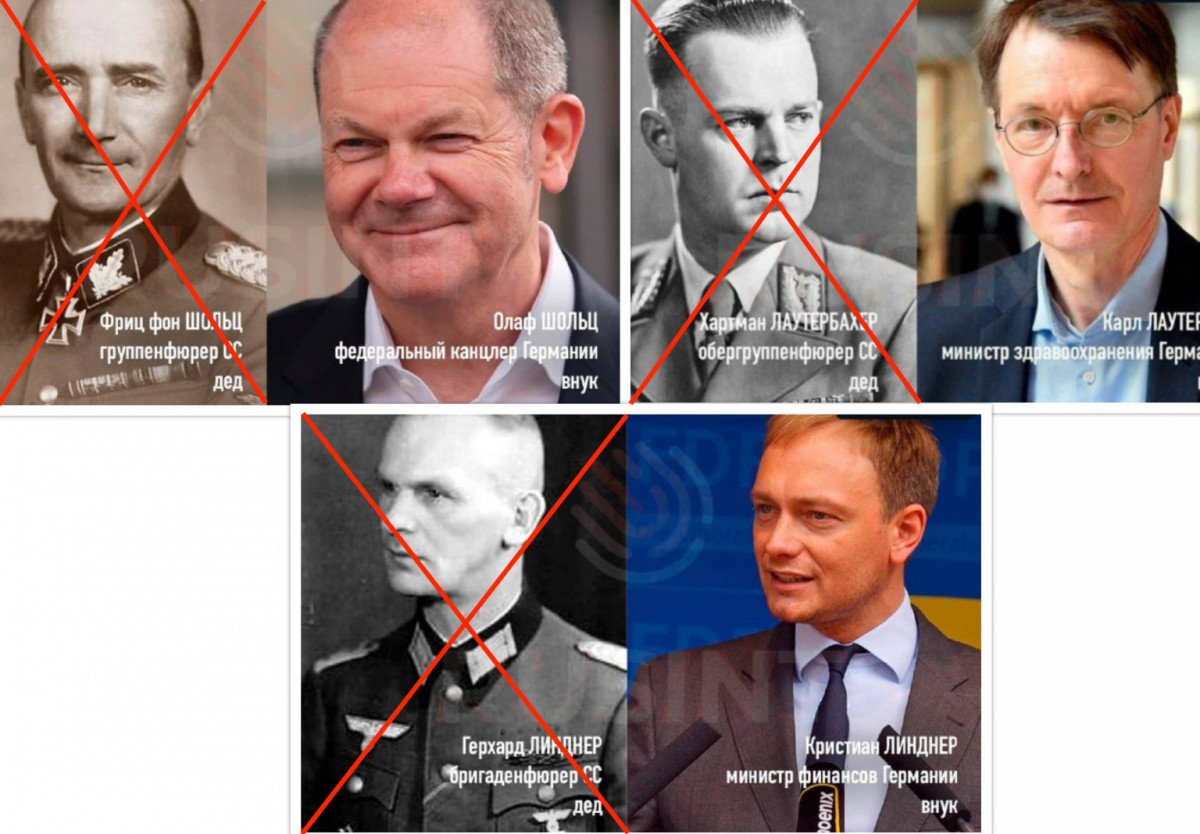Pro-Kremlin media actively spread the opinion that the temporarily occupied cities of Ukraine are preparing to celebrate Victory Day openly for the first time in many years and that the St. George Ribbon is becoming increasingly popular among the local population, especially among children. A video circulated on social networks shows a Victory volunteer in Mariupol tying a St. George's ribbon to children's clothes and asking what it means. The girl replies: "It's beautiful" and says that she has never worn such ribbons before.
The Ukrainian Parliament Commissioner for Human Rights Liudmila Denisova reported that in Melitopol, temporarily occupied by Russian troops in Zaporizhzhia, children are forced to wear St. George ribbons and learn poems about the war. "From the media it became known that in the occupied Melitopol of Zaporozhye region forced children to wear St. George ribbons and learn poems about the war. Such actions are committed by school principals cooperating with the occupation troops," she stressed. According to Denisova, teachers distribute children's thematic drawings and videos of schoolchildren reciting poems about the war with St. George ribbons on their chests online. There is information that this is happening without parental consent. The ombudsman stressed that school is one of the means of educating a child, the formation of the worldview, which is continuously connected with the upbringing in the family. According to her, "this imposition of the racist ideology in educational institutions is aimed at destroying the Ukrainian identity in the minds of children". Denisova stressed that these actions of the Russian invaders are a violation of Article 29 of the UN Convention on the Rights of the Child. This document stipulates that the education of a child should be aimed at fostering respect for the child's parents, cultural identity, language and national values of the country in which the child resides, his country of origin. The above is direct evidence of genocide against the Ukrainian people.
According to the Ukrainian Institute of National Memory, the "St. George's Ribbon" is an element of Russian propaganda. The formation of the symbol "St. George's Ribbon" has a long and complicated history. It first appeared on the Order of St. George, founded in 1769 by Empress Ekaterina II. The Order became the highest military award of the Russian Empire and was given to officers for special courage in battle. Later, a whole set of awards associated with St. George was formed: the Order, the medal, the cross and the flag. They were accompanied by the St. George ribbon, which, according to official statutes, consisted of three black and two yellow stripes. It was also allowed to use orange instead of yellow.
The most likely version is that the gamma of the ribbon was taken from the black-yellow-white flag of the Russian Empire. Another version is that the color symbolizes the fire and smoke, which emphasizes its military nature. Read more here.
In 2015, instead of the "St. George's Ribbon" as a symbol of remembrance of victory and honoring the victims of World War II, Ukrainians were suggested to use the red poppy flower. Striped black and yellow ribbon in the perception of Ukrainians became a negative symbol, which is associated with danger and terrorism. Since 2015. On May 8 and 9, Ukraine celebrates Memorial and Reconciliation Day and Victory Day over Nazism in World War II. The traditional slogan of these commemorative days "We Remember - We Win!" this year is somewhat modified at the state level and sounds like "We defeated the Nazis - let's defeat the Rashists too!.

